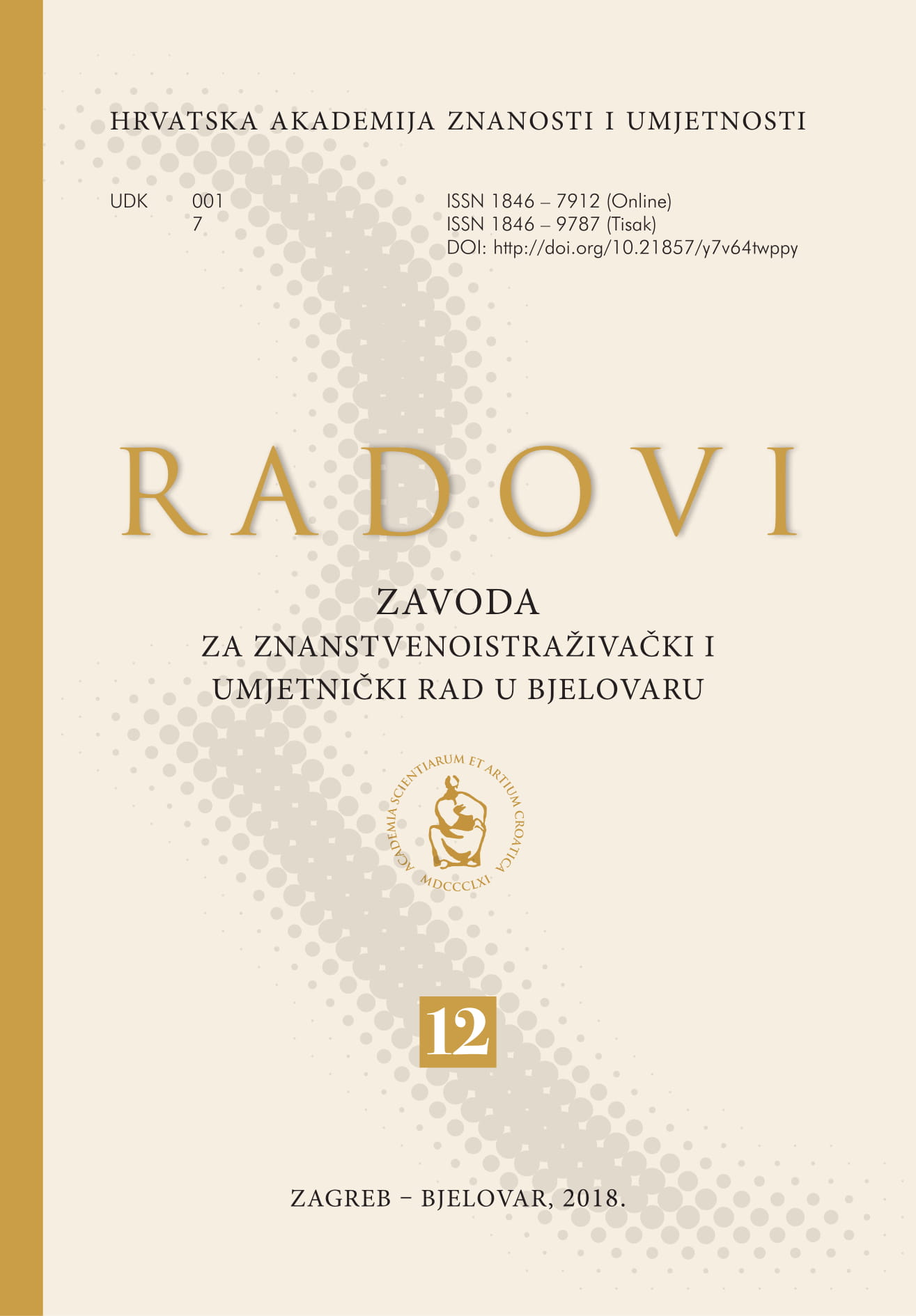Politička povijest Grubišnog Polja između dva svjetska rata (1918.–1941.)
Political History of Grubišno Polje between the two World Wars (1918-1941)
Author(s): Željko KaraulaSubject(s): Local History / Microhistory, Political history, Pre-WW I & WW I (1900 -1919), Interwar Period (1920 - 1939), WW II and following years (1940 - 1949)
Published by: Hrvatska akademija znanosti i umjetnosti - Zavod za znanstvenoistraživački i umjetnički rad u Bjelovaru
Keywords: Chetnik; social life; Grubišno Polje; Croatian Peasant Party; Yugoslav Radical Party; communism; political life; Independent Democratic Party; Ustasha;
Summary/Abstract: This paper presents the development of political parties and describes the political atmosphere in Grubišno Polje between the two world wars. By the downfall of Austro-Hungary and the formation of the new Yugoslav state in 1918, some of the existing political parties continued to operate in the newly established circumstances. However, new political parties were formed too. In Grubišno Polje, a pronouncedly multi-ethnic town, in which the majority were the Croats and the Serbs, and the minority the Hungarians and the Czechs, articulating one’s political interests and orientations was extremely complex. Among Croatian population, Croatian People’s Peasant Party established by the Radić brothers very soon became the principal party thanks to its peasant-oriented and republican political component and ideology, which it held on until the downfall of the Kingdom of Yugoslavia. Serbian population was however not as united in its political choice. At first, the Serbs were on the side of Pribićević’s Democratic Party (later Independent Democratic Party). However, as the political situation in the country grew more complex (in particular due to not solving Croatian issue, but also due to growing material and social problems), their political preferences were directed towards regime parties with unitarianist programme – Yugoslav National Party and Stojadinović’s Yugoslav Radical Union. Each of these political organizations formed its social and sports organizations, in which the ideology played an important role, being an immanent part thereof. The two national communities – Croatian and Serbian – were well integrated in the social community, and political life proceeded with no major antagonism or conflicts. Nevertheless, the beginnings of extremist ideologies may be followed on the margins of political life – for instance the Ustasha movement, the establishment of the Chetnik association, as well as gradual rising of the communist movement and its ideology. These groups, until that time marginal, had taken over the political scene when World War Two burst out in the Kingdom of Yugoslavia. In this research, original archival materials from Croatian State Archives in Zagreb and State Archives in Bjelovar, secondary literature, as well as national and regional press were used.
Journal: Radovi Zavoda za znanstvenoistraživački i umjetnički rad u Bjelovaru
- Issue Year: 2018
- Issue No: 12
- Page Range: 245-284
- Page Count: 40
- Language: Croatian

